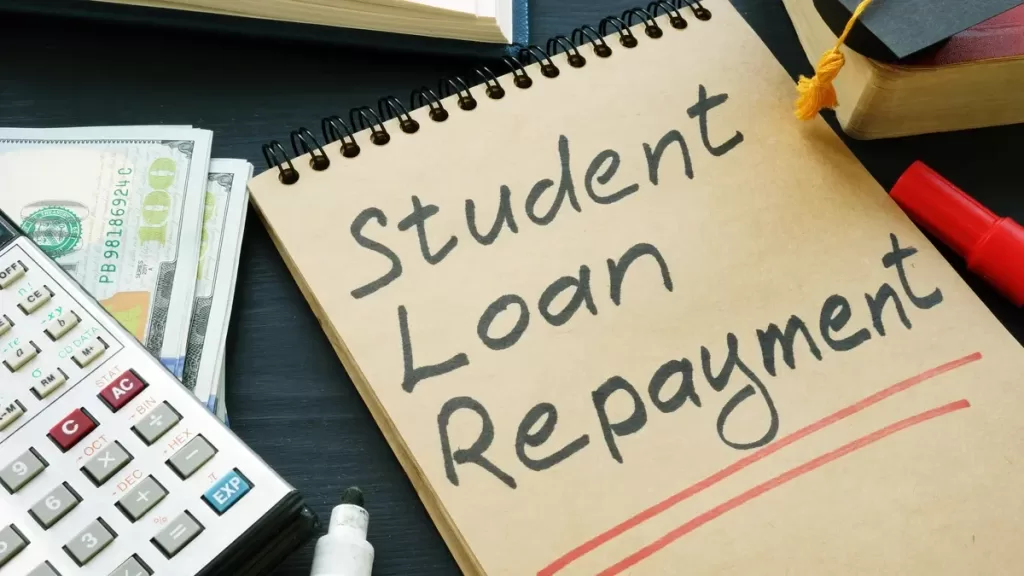How To Get Student Maintenance Loans | Complete Guide

The Maintenance Loan typically becomes the primary source of funds during your university years. However, do you know how it operates and how much you will receive? Let us break it down for you.
Our National Student Money Survey shows that Maintenance Loan is a significant financial resource for university students.
Since you will likely consider applying for one, you must familiarize yourself with the eligibility requirements, the application process, and the amount you can receive. It is equally important to understand how to repay the loan and what to do if it falls short.
In true Save the Student style, we have got you covered. Keep reading, and we will address all your inquiries about student Maintenance Loans.
Related Article: How To Applying for Student Finance 2024 | Complete Guide
What Is Student Maintenance Loans?
The Student Maintenance Loans offered by the government are designed to assist with your living expenses during your university years. It covers various costs, such as rent, bills, food, and social activities, providing financial support for various necessities.
Applying for Student Maintenance Loans follows the same process as Tuition Fee Loans. Eventually, you will make repayments on both loans as a combined sum. It is important to note that although Student Maintenance Loans and Tuition Fee Loans are part of the same student funding process, they are considered two distinct types of funding.
Although we oppose students incurring debt for university attendance, the existing repayment terms for Student Loans are quite manageable. We often suggest opting for a Tuition Fee Loan and a Maintenance Loan rather than choosing either.
By combining these loans, students can ensure better financial coverage throughout their university experience, easing the burden of expenses and enabling them to focus on their studies and overall well-being. While we encourage responsible financial choices, the current repayment conditions make taking out these loans a practical and reasonable option for many students.
When do Student Maintenance Loans come in?
Your Student Maintenance Loans disbursement timing varies depending on your location within the UK and your university’s official term start date.
Regardless of where you study, you must complete course registration before receiving your initial student finance payment. This occurs in September for most students, so we recommend prioritizing registration as one of the first tasks when starting university. This ensures a smooth process in receiving your student finance 2024 and allows you to focus on your studies without financial worries.
Beyond that, the disbursement of Student Maintenance Loans has some variation.
For students from England, Northern Ireland, and Wales, Student Maintenance Loans are usually paid in three instalments throughout the year. These instalments typically fall in September, January, and April. However, the dates may vary based on your university’s semester start date.
Read Also: Commercial Loan Truerate Services Latest Update 2024
Similarly, the exact date of receiving your Student Loan might differ from that of your friends. Generally, Student Loans are paid on the first day of the term. Since universities often have staggered term start dates, it’s normal for your friends to receive their loans before or after you. There’s no need to worry, as the timing is adjusted to fit each university’s academic schedule.
For students from Scotland, there’s a slight difference – your Maintenance Loan is paid on the 7th of every month.
Unlike students from other parts of the UK, you won’t receive three large payments throughout the year. However, the monthly payment system does have its advantages, as it helps you maintain a more manageable budget.
Student Finance loan payment dates 2024
To help you keep track of your upcoming Student Loan payments in the 2024 academic year, here are the disbursement dates for Maintenance Loan payments:
- Students from England, Northern Ireland, or Wales: Expect payments in or around September 2024, January 2024, and April 2024.
- Students from Scotland: You’ll receive your Maintenance Loan on the 7th day of each month.
Are you eligible for a Student Maintenance Loan?
Eligibility for a Student Maintenance loan depends on several factors. Don’t worry; we’ll go through each criterion shortly. Generally, most undergraduates starting university are eligible to receive funding.
Here are the key factors that determine your eligibility for a Maintenance Loan:
1.Your university/college and course
To be eligible for a Maintenance Loan, the first requirement is that your university, college, or institution must be officially recognized or listed. This process is typically straightforward, as it includes most universities and colleges.The course you are enrolling in must be on the government’s list of qualifying courses.
For most undergraduate courses, eligibility is straightforward, and they are eligible for funding. However, if you’re studying part-time, there might be different criteria to consider.
In general, students in most courses at most universities will be eligible for a Maintenance Loan. To ensure eligibility, you can visit the government’s website for a comprehensive list of criteria.
2.Whether or not you’ve studied before
In theory, this should be your first higher education course enrollment to be eligible for a Student Maintenance Loan. However, the situation is a bit more nuanced.
If you previously started a course but had to drop out of university, you may still be eligible to receive funding again. Similarly, if you’re retaking a year at the same institution, you may also qualify for a Maintenance Loan.
This is because all students are eligible for funding for the course duration they are applying for, plus an additional year.If you’re applying for a Maintenance Loan on a different course after studying, you must subtract the previous study years from the funding eligibility period.
For instance, most students are entitled to four years of funding on a three-year course. However, if you have already studied for two years on another course, you’d subtract two years, making you eligible for funding for only two more years.
An exception to this rule applies if you dropped out for “compelling personal reasons.” In such cases, you could be eligible for funding for the entire course, irrespective of your previous study duration. These reasons usually include serious illness rather than simply not being satisfied with the course you were on.
Lastly, even if you have already completed a degree, you might still be eligible for funding. This applies to a few specific cases, such as students “topping up” a qualification to a full Honours degree or those enrolling in an eligible course. It’s always worth checking your eligibility, as there’s no harm in doing so.

3. Student Age for Student Maintenance Loans
- Age restrictions on Student Maintenance Loans should not concern most students.
- The only age group affected is those aged 60 or over. Even in this case, you may still receive some funding if you study full-time.
- If you are 25 or older, the calculation of your loan size will be slightly different. For more information on Student Loans for mature students, refer to our comprehensive guide.
4.Student nationality and residency status
Nationality and residency status are often the most complex eligibility criteria, and they can catch students off guard.
Generally, you qualify for a Maintenance Loan if you are a UK national (or have ‘settled status’) and have been living in the UK (or the Channel Islands or the Isle of Man) for the three years before your course start date.
It’s essential to have all three criteria met to ensure eligibility. For instance, if you are a British citizen but moved abroad during childhood, you might no longer be eligible.
In certain cases, you may be able to appeal and still receive a Maintenance Loan. This usually requires evidence that you have maintained economic ties to the UK during your absence, like one parent staying and paying taxes in the UK or that your parents had to move abroad for work.
Special exceptions apply to specific groups, such as refugees and stateless individuals.
Additionally, some UK nationals in the EU might be eligible for funding for courses starting before 1st January 2028. For more information on this, refer to the government’s website for details regarding UK students residing in the EU.
We reiterate that these criteria need to be clear to you. As we mentioned earlier, most university students will be eligible to receive a Maintenance Loan, particularly if they have studied at a school in the UK and are attending a well-established university.
However, if you are still determining your eligibility, contacting your funding body and seeking clarification is always wise.
How Much Student Maintenance Loan Will You Get?
1. Your UK location: Each country in the UK has its own funding body for students. You’ll apply to the funding body in the country where you usually reside when you’re not at university.
2. Living arrangements: In most of the UK (excluding Scotland), there’s more funding available for students living away from home during their university years. Additional funding is often provided for students studying away from home, especially in London.
3. Household income: Students from higher-income households typically receive less generous funding from Student Finance bodies. Conversely, students from lower-income backgrounds usually receive more substantial financial support. Depending on your UK location, this may influence the size of your Maintenance Loan or any potential Maintenance Grant (if applicable).
4. Duration of study: If you’re pursuing an accelerated degree, you might be eligible for extra funding to cover the additional weeks of study each year. In this guide, we’ll focus on the primary Maintenance Loan allowance. For details on extra funding for accelerated degrees, refer to our guide dedicated to that topic.
Remember, your Student Loan is provided by the UK region where you usually reside, not where you plan to study. Therefore, if you live in Northern Ireland but intend to study in Scotland, you should apply for Student Finance Northern Ireland funding.
What is the average Student Maintenance Loans 2024?
Based on calculations from our National Student Money Survey and the Student Loans Company data, the average Maintenance Loan is around £5,820 per year.
However, it’s important to note that the amount you’ll receive is not influenced by what the ‘average’ student gets. Instead, the size of your Student Maintenance Loans is determined by various factors, including your household income, living arrangements during your studies, and your usual UK location. These factors play a significant role in calculating your specific Maintenance Loan amount.
Student Maintenance Loans In England 2024
| Household Income | Living at home (£) | Away from home (outside London) (£) | Away from home (London) (£) |
| £25,000 or less | £8,400 | £9,978 | £13,022 |
| £30,000 | £7,694 | £9,265 | £12,297 |
| £35,000 | £6,988 | £8,552 | £11,571 |
| £40,000 | £6,282 | £7,839 | £10,845 |
| £45,000 | £5,576 | £7,125 | £10,120 |
| £50,000 | £4,869 | £6,412 | £9,394 |
| £55,000 | £4,163 | £5,699 | £8,668 |
| £58,291 | £3,698 | £5,229 | £8,191 |
| £60,000 | £3,698 | £4,986 | £7,943 |
| £62,343 | £3,698 | £4,651 | £7,603 |
| £65,000 | £3,698 | £4,651 | £7,217 |
| £70,000 | £3,698 | £4,651 | £6,491 |
| £70,040+ | £3,698 | £4,651 | £6,485 |
Student Maintenance Loans In England 2024
Below are the upper earnings thresholds for the parents of students in different living situations. Students whose parents’ household income exceeds these thresholds will receive the minimum Maintenance Loan applicable to their specific living arrangements:
- If you reside at home and your household income is £58,291 or above, you will receive a minimum Maintenance Loan of £3,698.
- If you live away from home and outside London, and your household income is £62,343 or above, you will receive a minimum Maintenance Loan of £4,651.
- If you live away from home in London, and your household income is £70,040 or above, you will receive a minimum Maintenance Loan of £6,485.
Please note that these amounts are subject to change based on your circumstances and financial status.
Remember that the household incomes in the table above are merely illustrative examples. Your actual Maintenance Loan will be calculated based on your precise household income rather than falling within a specific range (e.g., £42,345 instead of £40,000 – £45,000).
In other words, the amount you receive as a Maintenance Loan will be tailored to your financial situation, ensuring a more accurate and personalized assessment.
What are the minimum and maximum Student Maintenance Loans in England?
In England, students are eligible for a minimum Maintenance Loan of £3,698 if they come from households with an income of £58,291 or above and plan to live at home while attending university.
On the other hand, the maximum Maintenance Loan available is £13,022. This higher amount is granted to students living away from home, specifically in London, whose annual household income is £25,000 or less.
Maintenance Loans and Grants in N. Ireland 2024
In addition to Maintenance Loans, which require repayment, Student Finance Northern Ireland also provides Maintenance Grants that do not need to be repaid. When applying for financial support, students receive both the Maintenance Loan and Maintenance Grant simultaneously, and the amount received for each is interdependent.
For students planning to live with their parents, here are the available Maintenance Grant amounts:
| Household income | Maintenance Grant | Maintenance Loan | Total support |
|---|---|---|---|
| £19,203 or less | £3,475 | £3,135 | £6,610 |
| £25,000 | £2,201 | £3,605 | £5,806 |
| £30,000 | £1,215 | £4,035 | £5,250 |
| £35,000 | £689 | £4,561 | £5,250 |
| £41,540 | £0 | £5,250 | £5,250 |
| £45,000 | £0 | £4,741 | £4,740 |
| £50,451+ | £0 | £3,938 | £3,938 |
Maintenance Loans Living away from home and outside of London:
| Household income | Maintenance Grant | Maintenance Loan | Total support |
|---|---|---|---|
| £19,203 or less | £3,475 | £4,661 | £8,136 |
| £25,000 | £2,201 | £5,131 | £7,332 |
| £30,000 | £1,215 | £5,561 | £6,776 |
| £35,000 | £689 | £6,087 | £6,776 |
| £41,540 | £0 | £6,776 | £6,776 |
| £50,000 | £0 | £5,530 | £5,530 |
| £53,035+ | £0 | £5,084 | £5,084 |
Student Maintenance Loans away from home and in London
| Household income | Maintenance Grant | Maintenance Loan | Total support |
|---|---|---|---|
| £19,203 or less | £3,475 | £4,661 | £8,136 |
| £25,000 | £2,201 | £5,131 | £7,332 |
| £30,000 | £1,215 | £5,561 | £6,776 |
| £35,000 | £689 | £6,087 | £6,776 |
| £41,540 | £0 | £6,776 | £6,776 |
| £50,000 | £0 | £5,530 | £5,530 |
| £53,035+ | £0 | £5,084 | £5,084 |
The household incomes provided in the table above are merely illustrative examples. The loan amount you will receive will be based on your precise household income, rather than falling within a specific range (for instance, £32,345 instead of £30,000 to £35,000).
What are the minimum and maximum Maintenance Loans in Northern Ireland?
The financial support package for Northern Irish students comprises both a grant and a loan. Therefore, it is more beneficial to consider the total support available rather than focusing solely on the loan component.
For students from Northern Ireland, the minimum support amount offered is £3,938. This sum is provided to students living with their parents whose household income exceeds £50,451.
On the other hand, the maximum support amount available for Northern Irish students is £10,852. This grant is given to students studying away from home, particularly in London, whose household income is £19,203 or below. Out of this total support, £3,475 is attributed to the Maintenance Grant, while the remaining £7,377 constitutes the Maintenance Loan.
Maintenance Loans and Grants in Scotland 2024
| Household income | Maintenance Grant | Maintenance Loan | Total support |
|---|---|---|---|
| £19,203 or less | £3,475 | £7,377 | £10,852 |
| £25,000 | £2,201 | £7,847 | £10,048 |
| £30,000 | £1,215 | £8,277 | £9,492 |
| £35,000 | £689 | £8,803 | £9,492 |
| £41,540 | £0 | £9,492 | £9,492 |
| £50,000 | £0 | £8,246 | £8,246 |
| £57,643 | £0 | £7,121 | £7,121 |
In Scotland, the funding body known as Student Awards Agency Scotland (SAAS) provides both grants and loans to students.
Unlike the rest of the UK, the loans offered to Scottish students are not determined by their living situation. Instead, four fixed amounts are available, and the sum a student receives depends on their household income band.
Students with lower household incomes receive higher overall funding; a larger portion of their support comes from non-repayable grants.
Another noteworthy difference between the Scottish system and the rest of the UK is that students are evaluated based on household income bands rather than their exact household incomes. Consequently, a student with a household income of £24,000 will be eligible for the same level of support as a student with a household income of £33,999 since both figures fall within the same income band.
What are the minimum and maximum Maintenance Loans in Scotland?
The highest combined amount for the Maintenance Loan and Grant package in Scotland reaches £9,000. This financial support is provided to students falling within the lowest income band (£0 – £20,999), where £2,000 of the total funding is a non-repayable grant.
Conversely, the minimum Maintenance Loan available to Scottish students amounts to £6,000, exclusively offered to those within the highest income band (£34,000 and above). In this case, the entire sum constitutes a loan, necessitating repayment in the future.
Maintenance Loans and Grants in Wales 2024
The Welsh government provides students with a combination of Maintenance Loans and Grants. Like Northern Ireland and England, the amount of financial assistance offered varies based on the student’s location and household income.
However, it is crucial to note that students from Wales residing in the same living situation (whether living at home, away from home but outside London, or away from home in London) all receive equal financial support.
The key distinction lies in the proportion of the support package that constitutes a loan and the portion provided as a grant. Students with lower household incomes receive a larger share as a grant, while those with higher household incomes receive a greater loan.
| Household income | Grant | Loan | Total |
|---|---|---|---|
| £18,370 or less | £6,885 | £3,065 | £9,950 |
| £25,000 | £5,930 | £4,020 | £9,950 |
| £35,000 | £4,488 | £5,462 | £9,950 |
| £45,000 | £3,047 | £6,903 | £9,950 |
| £59,200+ | £1,000 | £8,950 | £9,950 |
living away
| Household income | Grant | Loan | Total |
|---|---|---|---|
| £18,370 or less | £8,100 | £3,620 | £11,720 |
| £25,000 | £6,947 | £4,773 | £11,720 |
| £35,000 | £5,208 | £6,512 | £11,720 |
| £45,000 | £3,469 | £8,251 | £11,720 |
| £59,200+ | £1,000 | £10,720 | £11,720 |
living away from home and in London:
| Household income | Grant | Loan | Total |
|---|---|---|---|
| £18,370 or less | £10,124 | £4,551 | £14,635 |
| £25,000 | £8,643 | £5,992 | £14,635 |
| £35,000 | £6,408 | £8,227 | £14,635 |
| £45,000 | £4,174 | £10,461 | £14,635 |
| £59,200+ | £1,000 | £13,635 | £14,635 |
Once more, it’s important to emphasize that the household incomes provided in the table above are merely illustrative examples. When determining the Maintenance Loan amount, your household income will be considered rather than categorized within a specific band. For instance, if your household income is £42,345, it will be used directly in the calculation instead of being grouped into a range such as £35,000 to £45,000.
What are the minimum and maximum Maintenance Loans in Wales?
In Wales, the highest amount available for the Maintenance Loan and Grant package is £14,635, which applies to all students living away from home and studying in London.
Conversely, the minimum Maintenance Loan and Grant package offered to Welsh students totals £9,950, which applies to all Wales students who will be residing at home while pursuing their studies at university.
How to apply for a Maintenance Loan
Students from England, Northern Ireland, or Wales can apply for a Maintenance Loan online or by post. However, the postal option is unavailable if you’re from Scotland, and you must apply online.
Whether you apply online or by post, you might need to send some supporting evidence through the mail. This could include documents such as passports, birth certificates, and other required paperwork.
You can refer to our detailed resource for a comprehensive guide to applying for Student Finance, including Maintenance Loans. Additionally, if you only need a direct link to your specific funding body, we can also provide that information.
It’s essential to remember that you should apply for funding from the part of the UK where you ordinarily live, not the part where you’ll be studying. Following this guideline ensures that you receive the appropriate financial support based on your residence.
- England – Student Finance England
- Northern Ireland – Student Finance Northern Ireland
- Scotland – Student Awards Agency Scotland
- Wales – Student Finance Wales.
How to apply for a Current Year Income Assessment
If you are applying for Student Finance for the academic year 2024 you must provide your household income from the tax year 2021/22, which covers the period from 6th April 2021 to 5th April 2022.
However, if you anticipate that your household income for the current tax year (6th April 2023 to 5th April 2024) will be notably lower than it was in the 2021/22 tax year, you can apply for a Current Year Income Assessment. Doing so will make you eligible for larger Maintenance Loan payments throughout the academic year. If your current financial situation indicates reduced income, you can receive increased financial support during your studies.
After the 2024 tax year, you must submit additional evidence to verify your household income. If your income turns out to be lower than expected, you may become eligible for an extra Maintenance Loan. However, if your income is higher than you estimated, you must repay the excess immediately.
Each country within the UK has specific criteria for a Current Income Assessment:
- England: Your household income must have dropped by at least 15% to be considered for the assessment. For more information, refer to Student Finance England.
- Northern Ireland: Your household income must have decreased by at least 5% to qualify for the assessment. For more details, consult Student Finance Northern Ireland.
- Scotland: You are eligible for a Current Income Assessment if your household income has fallen into a different income bracket. For additional information, refer to the Student Awards Agency for Scotland.
- Wales: Your household income must have dropped by at least 15% to be considered for the assessment. However, it’s important to note that due to the structure of the Welsh Student Finance system, you might not receive additional cash. Instead, you could receive a higher grant proportion than the loan. For further details, refer to Student Finance Wales.
Suppose your household income was previously above the maximum threshold in England, Northern Ireland, or Wales. In that case, it must now drop below this threshold for you to become eligible for extra funding.
- Likewise, suppose your household income is already below the minimum threshold across the UK. In that case, you won’t be eligible for a larger Student Loan since you already receive the maximum amount available.
How do you repay your Student Loan?
We cannot stress this enough – while the Student Finance system may have shortcomings, the repayment terms for Maintenance Loans (and Student Loans overall) are relatively generous.
Your Maintenance Loan and Tuition Fee Loan repayments will be combined into a single Student Loan. Therefore, when we discuss the repayment terms of Maintenance Loans, it is applicable universally.

We have a detailed guide available for a comprehensive understanding of Student Loan repayments. However, for now, let’s address some of the most frequently asked questions students have regarding the repayment of Maintenance Loans.
What is the interest rate on Student Loans?
For students from England and Wales, the interest rate on Student Loans typically varies based on their income level and whether they are currently studying or have graduated. However, in response to the increasing inflation, the interest rate for the 2024 academic year is currently fixed at 6.9% for all individuals with Plan 2 loans, regardless of their specific circumstances.
On the other hand, for students from Northern Ireland and Scotland, the interest rate on Student Loans stands at a straightforward 5%. No variations or complexities apply in these regions; all students are subject to the same interest rate.
How and when do you start repaying your Student Loan?
Regardless of which part of the UK you come from, the repayment of your Student Loan begins in April after you graduate. However, it’s important to note that repayment will only commence if your earnings surpass the repayment threshold specific to your type of loan.
As of now, the current repayment thresholds for UK graduates are as follows:
- Students from England who commenced their studies on or after 1st August 2024 (Plan 5 loans): £25,000 a year (£2,083 a month or £480 a week) before tax.
- Students from England who started before 1st August 2024 (Plan 2 loans): £27,295 a year (£2,274 a month or £524 a week) before tax.
- Students from Wales (Plan 2 loans): £27,295 a year (£2,274 a month or £524 a week) before tax.
- Students from Northern Ireland (Plan 1 loans): £22,015 (£1,834 a month or £423 a week) before tax.
- Students from Scotland (Plan 4 loans): £27,660 (£2,305 a month or £531 a week) before tax.
These repayment thresholds, similar to the interest rates on Student Loans, may change each year, so it’s essential to refer to our Student Loan repayments guide for the most up-to-date information.
Regarding the repayment process, most graduates can actively make repayments. If you are not self-employed, your Student Loan repayments will be automatically deducted from your salary, similar to how taxes are deducted. Manual repayments will be optional in this case.
However, if you are self-employed, you will be responsible for making Student Loan repayments as part of your self-assessment tax return.
When is your Student Loan debt cancelled?
A significant advantage of the Student Loan’s repayment terms is that regardless of how much you have repaid, the remaining balance is eventually cancelled by the government after a certain number of years.
For students from England, Scotland, or Wales, the loan is written off 30 years after you first become eligible to repay, which is the April after you graduate.
However, if you are from England and begin your course after 1st August 2023, it will take 40 years before your loan is written off.
Northern Irish students have their loans cancelled after 25 years. Across the UK, your loan will be written off if you need to claim a disability-related benefit due to an inability to work or in the unfortunate event of your passing.
This feature of loan forgiveness provides students with a measure of reassurance, knowing that their loan debt has a time limit and will eventually be cleared under specific circumstances.
What to do if your Student Maintenance Loan isn’t enough?
Every year, we conduct our National Student Money Survey and consistently discover that the Maintenance Loan needs to meet students’ needs.
According to our latest survey, the average monthly shortfall between the Maintenance Loan and actual student living costs is £439. Consequently, a significant majority of students, about two in three (66%), reported that their Maintenance Loan is insufficient.
Given this unfortunate reality, you will likely require additional funding while attending university. If your Maintenance Loan doesn’t cover the entirety of your living expenses, here are the options available for securing extra financial support:
1.Use your interest-free overdraft
When students ask us about the best student bank account, our top advice is always consistent: Look for accounts that offer the largest interest-free overdrafts.
Most major banks provide student accounts, and as part of the package, they typically offer an interest-free overdraft. Unlike regular bank accounts, this feature allows you to use the overdraft without worrying about incurring any charges.
During your time as a student, you can freely access your overdraft without immediate repayment concerns. The focus on repaying the overdraft typically begins after you graduate. However, even then, you usually will only have to repay it some at a time.
After completing university, most student accounts transition into graduate bank accounts. These accounts also offer interest-free overdrafts, but the size of the overdraft gradually reduces over two or three years.
2.Ask your parents for money
We understand the concerns regarding Maintenance Loans being tied to household income, and we acknowledge that this is generally the case.
One of our main grievances is the need for more clarity from funding bodies about the expectation for parental contributions when students don’t receive the maximum Maintenance Loan.
If you’re unaware of this, you can calculate the difference between your Maintenance Loan and the maximum amount available to a student in your living situation. The resulting figure represents the amount the government ‘expects’ your parents to contribute each year.
However, it is essential to recognize that many parents who are expected to contribute may not be able to, or they might not be able to contribute as much as expected. Initiating the difficult conversation of asking for financial support from your parents can be even more challenging in such circumstances.
Fortunately, we have created a guide to help you navigate this process, with tips on approaching the conversation and requesting financial assistance from your parents.
Additionally, we offer a parental contribution calculator to assist you in determining the exact amount they are expected to provide.
But before you consider refusing to provide your household income information to the funding body, it’s important to know that they are already aware of such tactics. Students who don’t submit this information will receive the lowest Maintenance Loan by default, which might not be sufficient to cover all your expenses.
It’s essential to consider all available options and engage in open communication with your parents to understand the potential level of support they can offer.
3.Apply for bursaries, scholarships and grants
In addition to the Maintenance Grants mentioned earlier, there are numerous other grants available that the government does not fund.
Many universities and various charities and businesses offer students grants, bursaries, and scholarships. The best part is that none of this financial aid needs to be repaid!
While these grants are essentially free money, they often come with specific criteria to ensure that the funds go to those in the greatest need or excel in a particular field or discipline, such as sports or music.
You can explore our list of student bursaries to learn more about some of the common types of funding available in this category. If none apply to you, our guide to funding sources can help you discover additional opportunities.
Even if you believe you might not be eligible for grants, scholarships, or bursaries, it’s essential to think again. As demonstrated by various unusual bursaries, scholarships, and grants, funding opportunities exist for almost anyone and any area of interest!
4.Get a part-time job
Getting a part-time job might not be as effortless as some claim, but it is achievable.
Our National Student Money Survey reveals that 62% of students work part-time while attending university.
This makes it the most widespread source of income, along with parental contributions.The options for part-time jobs are vast and varied, ranging from being a sales assistant in a shop or working at a bar to exploring opportunities as a film and TV extra. Countless part-time job opportunities for students allow them to strike a balance between work and study.
5.Apply for hardship funds
If you find yourself facing financial difficulties, there is a possibility to apply for your university’s hardship fund.
Universities set up hardship funds to support students going through significant financial challenges. In most cases, although only sometimes, the money provided through these funds can be paid.
However, it’s important to note that these funds are intended for students experiencing genuine and severe financial difficulties. Universities are keen to ensure the funds are allocated to those needing them the most. As a result, you will likely be required to provide evidence that proves your financial struggle and shows that you have not been careless with your finances.
You may need to submit documents such as bank statements, Student Finance letters, and proof of your household income to your university to apply for hardship funding. This helps demonstrate that you have exhausted other options and have not frivolously spent your money on non-essential items.
If you want to know more about hardship funding, including who will likely qualify for assistance, you can refer to our comprehensive guide.
Should you take out an extra loan as a student?
During challenging times, it can be tempting to seek out the easiest and quickest sources of money. However, we strongly advise against resorting to payday and high-interest loans, as the negative consequences they bring in the medium- and long-term far outweigh any short-term benefits.
Payday loans are widely recognized for their dangers. Still, despite having similar flaws, high-interest loans, such as those offered by private loan companies, often receive less scrutiny or criticism.
We have compiled a comprehensive guide on the risks associated with private student loans and safer alternatives that you can explore for additional financial support. Please read this guide if you are considering taking out a high-interest loan.
Educating yourself about the potential risks and consequences of high-interest loans allows you to make more informed decisions and opt for safer and more sustainable financial solutions during difficult times.



